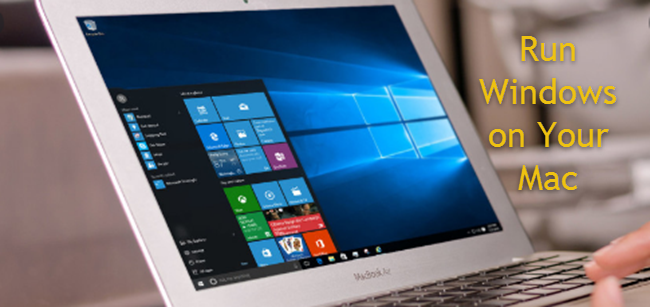

They’re used in help desk and support scenarios.
OPTIONS FOR RUNNING MAC OS ON WINDOWS WINDOWS
In addition to running Windows productivity apps, developers use virtualization to test native and web apps on other platforms and browsers. (It’s supposed to come to Chrome OS in the future as well.)īut there are lots of other reasons why one might want to use a virtualization solution on whatever platform. Coherence is a big reason why I prefer Parallels over other Mac-based virtualization solutions. This lets you run those Windows apps side-by-side under macOS, as if they were native apps, and not in an OS/desktop window that is visually isolated from the rest of the system. But one key benefit of Parallels, at least for those using virtualization to solve that “last mile” problem of running one or a handful of key Windows applications, is its Coherence feature. There are pros and cons to both approaches, of course. But some are traditional client-installed virtualization solutions like Parallels Desktop, which is starting to make its way to Chrome OS now in addition to the Mac.
OPTIONS FOR RUNNING MAC OS ON WINDOWS PC
Some are cloud-based, like Microsoft’s coming Cloud PC offering. We’ll get to that.Īnd with the shift away from Windows as the center of personal computing, we’re starting to see more solutions for running Windows applications on new platforms, many of which are mobile. In the near future, it’s Windows (and presumably Linux) on Apple Silicon (M1). Back in the day, that meant emulating Intel-based (x86) Windows on PowerPC-based Macs. I used Connectix Virtual PC, which was later purchased by Microsoft, back in the early days of OS X almost 20 years ago before moving on to more modern solutions like VMWare Fusion and then Parallels Desktop.Īnd anytime there’s a processor architecture change, these things get even more interesting. Virtualization has long been important on the Mac, primarily because of the app gap, a situation that is a lot less problematic today. Aside from the usual product updates, the big news this year was that Parallels had been featured in Apple’s M1 chipset reveal, and I was quite curious to know what that would look like.īut there’s a rich history to consider here.

I met (wait for it, virtually) with Parallels ahead of the launch of Parallels Desktop 16 this past fall, and before Apple shipped macOS Big Sur.


 0 kommentar(er)
0 kommentar(er)
